In 1921, coroners had Edward Searles body exhumed months after his death. Their conclusion, after examination, was that he had not been poisoned with arsenic as they had suspected. He died of natural causes. And when they planted him back in his Methuen, Mass., tomb they laid to rest a man who had controlled one of America’s greatest fortunes.
Edward Searles didn’t earn his fortune in the typical sense. He married into it. But in another sense he did earn it, because marrying a wealthy widow was the easy part of getting rich for Edward Searles. Keeping his wealth would prove far more difficult.
Over the years, Edward Searles (known by his middle name Frank) had many occupations. The way they were characterized varied depending on who described him. People who liked him called him interior decorator, architect, financier. His enemies – and he had many – called him a bric-a-brac salesman or a paper-hanger.

Edward Searles
Edward Searles
Edward’s first job was as a mill hand in a Methuen cotton mill. Searles’ family had moved to Methuen from Nashua, N.H., so that his father could get a job in the Methuen mill. His father and two of his siblings died when he was just three years old, reducing the family to just Edward, his brother Andy and their mother.
Edward Searles took piano lessons, but received little formal education. At age 12 he began working in the mills. As a young man, he went to Gardner, Maine, and taught music to support the family. When his brother returned from serving in the Civil War and stole Edward’s fiancée, Edward left Methuen for Boston to work for the furniture company Paul & Co.
Furniture
When the furniture company went bust, Edward took his accumulated savings and traveled to Europe to study the palaces. In 1874, at the age of 33, he moved on to New York and went to work at Herter Bros., an upscale interior design firm. Herter Bros. had a reputation as the design firm preferred by the Vanderbilt family.
Edward Searles had an eye for furniture and a polished and pleasant manner that went down well among the company’s wealthy client base. In 1881, at age 40, Searles went to San Francisco. Ill health had weakened him and he needed time away, he would say. Armed with a letter of introduction from Herter Bros., Edward Searles began introducing himself to the California elite.
In April of 1883 he approached the home of Mark Hopkins, a multi-millionaire who had died five years earlier. Searles said he hoped to get a look at Hopkins’ famous castle on Nob Hill. The visit led to a dinner invitation. Soon he was approached by Hopkins’ widow Mary. She asked if he would accompany her on a trip back to Massachusetts. She was travelling east to tend to family affairs in Great Barrington, Mass. Searles agreed to go.
Mansion No. 1
In Great Barrington, he and Mary developed plans to build a mansion. He became her companion for three years, traveling with her to New York, Block Island, Florida and Europe. Their relationship gradually morphed from patron/interior designer to husband/wife in 1887.
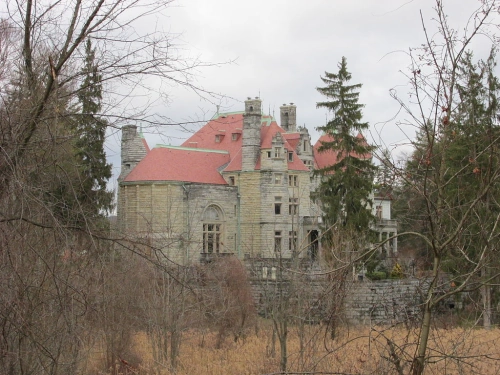
Searles Castle Great Barrington
Edward would finish work on Mary’s Great Barrington mansion and build another on Block Island. They had an apartment in New York. All the while, he continued expanding his childhood home in Methuen into an enormous estate, Pine Lodge.
He hired Henry Vaughan, the pre-eminent neo-Gothic architect in the United States, to design Pine Lodge. Vaughan would later design three more Searles’ residences and public buildings he underwrote.
When he needed money, Edward would simply send a request to San Francisco and the funds would be sent.
Timothy Hopkins
In San Francisco, Mary’s son Timothy Hopkins managed the Hopkins fortune. Mary and Mark Hopkins never had biological children. But they had taken in Timothy Hopkins (Nolan) when he arrived in California from Maine. Timothy’s father had gone to California to work for Hopkins, and he sent word for his family to come join him. By the time the family arrived, however, Timothy’s father had drowned. So the Hopkins looked after the family. Shortly before he turned 21, Mary had adopted Timothy.
By 1887, Timothy had trained in business and was managing the Hopkins fortune. Timothy did not like Edward, but having the continent between the two men seemed like a big enough buffer. In 1891, however, things changed. That was the year Mary Hopkins died and Timothy learned that his mother had changed her will.
While an earlier will left the Hopkins fortune to both Timothy and Edward, a codicil added to the will declared that Mary purposefully disinherited Timothy, leaving most of her money to Edward. The news that the Hopkins fortune, estimated at $30 million, was heading east rattled California society. And Timothy vowed to overturn the will.
Mark Hopkins and His Millions
The money at issue was earned by Mark Hopkins. Mark Hopkins made millions of dollars from the California Gold Rush. However, he never lifted a pick or shovel to do so. Hopkins went west from New York with the 49ers’ gold craze and sold shovels, picks, clothing and mining equipment to the prospectors eager to get into the hills.
Many thought Hopkins a poor businessman. He offered easy terms for his wares, sometimes taking no money and letting miners work on credit for years. From many of his customers he took payment in the form of shares of their eventual claims, many of which proved valueless.
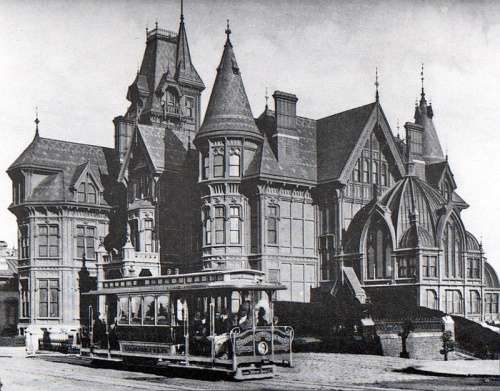
Mark Hopkins mansion in 1890
While some men searched the California wilderness for gold themselves, Mark Hopkins had a small army of men searching for gold for him. When they struck it rich, he and his New England Mining and Trading Company did too.
Thrifty and level-headed, Hopkins parlayed his gold fortune into a railroad fortune when he joined with three other men – Leland Stanford, Charles Crocker and Corliss Huntington – in founding the Central Pacific Railroad.
In 1854, Hopkins married Mary Sherwood, his first cousin. She eventually persuaded him to build a lavish mansion on Nob Hill in San Francisco and have the interior designed by New York’s Herter Brothers.
Nasty Lawsuit
Mary’s death and the terms of her will rocked society from coast to coast. She was one of the wealthiest widows in America and her son Timothy had a lot to lose. The ensuing lawsuit was nasty.
Edward said that Mary had changed the will because she learned that her son Timothy had hired private detectives to investigate Edward’s personal life and follow him around.
Timothy countered that his mother hired the detectives. She had grown suspicious of her husband’s affairs.
In a grueling trial, Timothy’s lawyers painted Edward Searles as a gold digger of a different sort than the men who worked for Mark Hopkins. And Edward admitted on the stand that his marriage to Mary had been prompted by romance, but also her money.
Timothy’s lawyers painted Edward Searles as indulging a dotty older woman to get at her fortune. They noted that he encouraged her spiritualist beliefs and attended several séances that she held in her Nob Hill mansion.
Edward’s lawyers countered that Timothy had received an education, considerable money, a Menlo Park mansion, and a high-level job at the Union Pacific Railroad thanks to his relationship with the Hopkinses. His mother Mary felt he didn’t need any more from her estate.
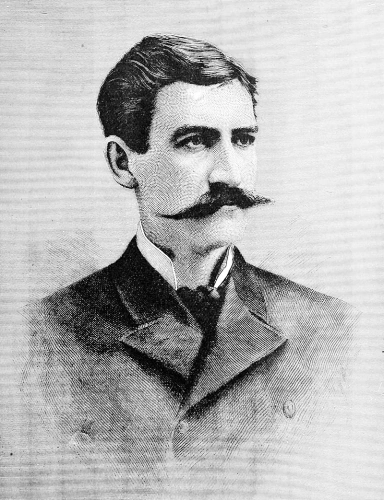
Timothy Hopkins
Secrets
But both sides seemed to dance around some issues. The judge ruled in favor of Edward Searles, but noted in his ruling that the parties were holding back secrets.
“This decision of mine is not at all on the merits of the case,” he wrote. “Why we have had only about of the third of the evidence put in, and the most important witnesses have not been examined.”
Whatever the detectives had found, Timothy was apparently holding it back to use as a bargaining chip as he appealed the judgment. Within a year the fight was settled.
Timothy received money, stocks and land valued at more than $3.2 million. Edward Searles received a promise that Timothy would no longer challenge the will.
The Nob Hill was mansion was split, in a manner of speaking. Timothy received the contents. The building was donated to an art school.
Edward Searles, Recluse
Following the trial, Edward Searles went on an 18-month traveling binge. In Methuen, he continued buying land around his childhood home, creating a mammoth estate. He furnished it opulently. Searles had his genealogy researched in hopes of finding a connection to British royalty. None was found.
He used his money to persuade the town to let him close streets to expand his property, and he fought the construction of a trolley that he felt was too near his home. The local newspaper dubbed him “Millionaire Searles” in reporting on his activities. But it did not deter him from expanding his estate or buying houses, demolishing them and replacing them with parks.
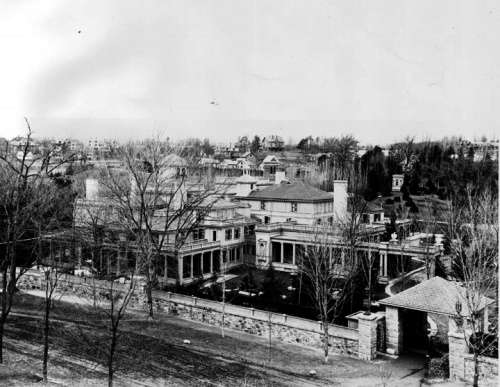
The Edward Searles estate in Methuen, 1890
Most viewed him as a generous, if eccentric, benefactor. He built the town a high school and a music hall. He bought the town newspaper to counteract his critics and staffed it with a friendly editor. And he financed businesses throughout town.

Methuen Memorial Music Hall, formerly Searles Organ Hall
Searles bought an organ factory and began donating organs to local churches, but under the condition that he be allowed to ornately redecorate the church interiors to keep up his decorating skills. Further, he set about commissioning new church buildings as gifts.
He did not limit himself to churches, either. Searles would travel the countryside in nearby New Hampshire. If a farm or rural setting struck his fancy, he would buy it and alter the scenery to his liking. He came to own hundreds of acres of land in southern New Hampshire this way. He would buy a farm, remodel it to resemble an English country house and then rent it or sell it.
A Proper Castle for Edward Searles
By 1905, Edward Searles fixated on one final obsession. He wanted a proper castle. Searles had purchased 1400 acres of land in Windham, N.H. His plans called for a one-quarter size replica of the Stanton-Harcourt Castle in Oxfordshire, England, complete with battlements. His masterpiece, designed by Henry Vaughan and dubbed Searles Castle, was finished in 1915.
Five years later, at the age of 79, Edward Searles would die in Methuen at his beloved Pine Lodge mansion. And his death touched off one final scandal. In his will, Edward Searles left $250,000 to his nephew Victor Albert Searles. But the will contained a threat. Should Victor challenge any portion of the will, he would be disinherited.
The bulk of Edward Searles’ fortune – some $35 million – was left to his personal secretary, Arthur Walker. The will was drafted and signed just 14 days before Edward Searles died.
Edward Searles’ Second Trial
Victor Searles determined to challenge his uncle’s will. He announced that his uncle’s behavior was so unusual and unorthodox that he would prove his mind was unsound. Aside from his penchant for buying buildings and moving them willy-nilly, Victor Searles promised to unearth a hidden side of his uncle.
Homosexuality was a crime in 1921 throughout America. It was considered a mental illness, and if Victor Searles created a compelling case that his uncle was a homosexual he could use that to challenge the will.
Mud
Victor’s first court filings hinted at the mud he prepared to sling: “Edward F. Searles at the time the will was being executed was . . . in the charge of three New York nurses, none of whom can now be found. His intimate friends were excluded from the Searles home within two days of the making of this instrument on the grounds that he was too ill to see anybody.
“Mr. Searles was a recluse. He was especially shy with women and was what might be called a woman hater. He spoke disrespectfully of women, not wanting them to be around him at all. “
Walker, they charged, had cooked up the will to steal Searles’ money. Searles’ body was exhumed and tested to determine if Walker had poisoned him. And Victor’s lawyers unearthed Angelo Ellison.
Ellison, a young elevator operator, had accepted Edward Searles’ offer to become his companion. Searles had showered clothes and gifts on Ellison and even tried to influence the military to keep the boy out of World War I. He was hiding in the Catskills when Victor’s lawyers found him, giving ammunition for Victor’s lawsuit.
Walker settled the suit and gave Victor $4.5 million rather than drag the matter through the court. He came out of it a millionaire many times over, though he never altered his modest lifestyle.
What Remains Today
Today, Edward Searles’ creations still stand. His mansion in Methuen now belongs to the Presentation of Mary Academy, and his Windham, N.H., Searles Castle is operating as an events facility. His Great Barrington mansion is a private school. The Searles High School in Methuen now houses municipal offices. And at Bowdoin College, Searles Science Building still serves students today.
Images: Searles Castle By David Kolifrath – Author, CC BY-SA 3.0, https://commons.wikimedia.org/w/index.php?curid=13339085. Searles Castle Great Barrington By John Phelan – Own work, CC BY-SA 3.0, https://commons.wikimedia.org/w/index.php?curid=23279874. This story about Edward Searles was updated n 2023. If you enjoyed reading about his mansions, you may also want to read about Henry Vaughan here.
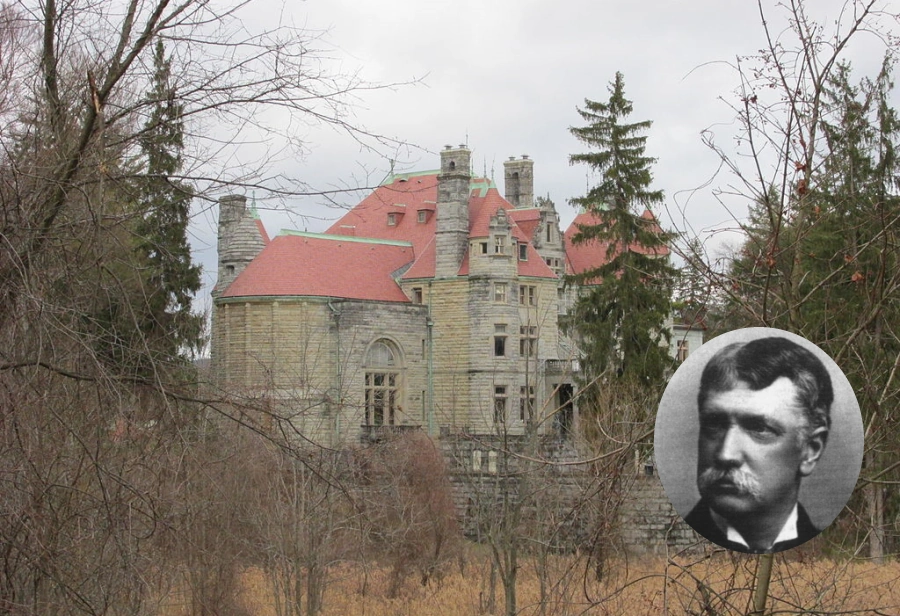


9 comments
Why did the adopted son’s name change from Timothy to Thomas mid-article?
Our writer had a momentary lapse! Thank you for pointing out the error — it’s been corrected.
We spent many an enjoyable day at the ‘Castle’ , Visable from rt 93, My Aunt was a sr superior with the Sisters of Mercy, Sr Mary Roseline King, They used it as school and later their orders infirmary was situated on the grounds below the Castle. and we visited there often. Had family reunions there and nephew later was working with caterer who often used the facility for weddings, etc.
I am currently Chairman of the Board of Trustees of the Searles School and Chapel in Windham,
another Searles donation.
I wished the author would have mentioned Henry Vaughan the architect who Searles retained to design
most of his buildings.
Vaughan was one of the premiinent Gothic-Revival architects his day. Among his non- Searles masterworks are chapels for Groton School, St Paul’s School and Cathedral of St John the Diviine in NYC.
He was also an early architect for Washington National Cathedral. 20i7 is the centennial of his death so an article should be considered. Also one on the Methuen Ogan Hall
Great suggestion! We’ll look into doing a Haney Vaughan story.
I am the Head of School at Presentation of Mary Academy in Methuen. The sisters of the Presentation of Mary purchased the property in 1957 from one of Mr. Searles relatives. Not sure why the article says that the mansion in Methuen was torn down in 1930? A small section was, but the majority is still intact and used every day by the sisters and the school.
[…] The Episcopal church gave him plenty of work. So did eccentric millionaire Edward Searles. […]
Pine Lodge very much still stands in Methuen as well as the Music Hall the Flemish Renaissance Extravaganza built Great walkr organ. Are high school in the same style still stands. Perhaps the author confused anglo-norman tennis state which towered above Pine Lodge burned in the seventies has since been largely removed
Leland Stanford was long dead by the time of the trial in which he was supposedly involved….
This historian is relying on second or third hand sources.
Comments are closed.